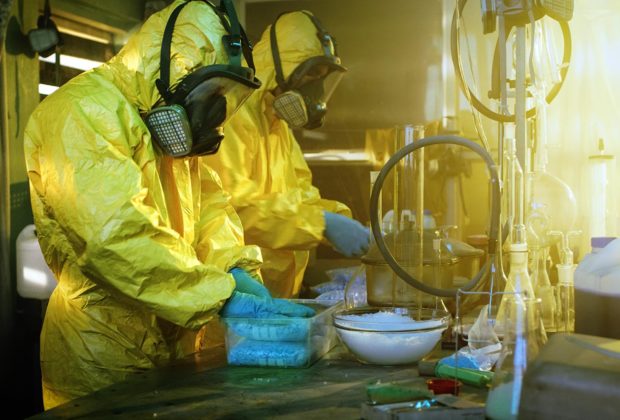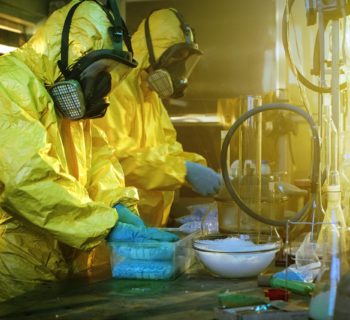Meth is usually created illegally by mixing ephedrine or pseudoephedrine with dangerous or extremely combustible substances. The mixture is then heated to crystallize in a solvent such as gasoline. Because illegal methamphetamine production is unregulated and unsupervised, and there is no quality control mechanism in place, any number of cutting agents might theoretically be used to dilute the substance.
The heating procedure is especially hazardous because there is a high risk of fire and explosion. Also highly unstable and flammable are the waste materials left behind.
Operating a meth lab is linked to a slew of negative health consequences. During methamphetamine manufacture, inhaling fumes can cause serious lung damage and other respiratory problems, while touching the various caustic or poisonous chemicals can harm the skin and eyes.
'Instant Meth' And 'Cutting Meth' As The Two Types Of Methamphetamines.
The traditional method of making methamphetamine necessitates a large amount of room. Meth labs generate a lot of trash and employ a variety of devices, such as pots and pans for heating, stoves or burners for cooking, hoses for ventilation, and curtains or other barriers to prevent outsiders from seeing what's going on inside. This procedure can be costly and time-consuming to keep up with.
Furthermore, because of the highly unstable process of making methamphetamine and the combustible materials used in the process, these sophisticated laboratories can often be easily identified by law enforcement officials on the lookout for them, and they pose a serious threat to those who work in them.
To make meth, some users and manufacturers employ the "shake and bake" method, which involves combining chemicals in a plastic or glass container, shaking it, and then heating it. After that, the meth is removed. This "instant meth" method is extremely risky, because the chemical in the containers is highly volatile and can explode when removed.
Cutting agents and compounds that were poorly separated during the synthesis of illegally made methamphetamine may be present in illegal meth. Typical examples are:
- Amphetamines and other stimulants used to mask impurities.
- Ephedrine sulfate is a source of sulfur. It's possible that this will turn the meth orange.
- Copper salts, which have a greenish tint to them.
- When phosphorous, a highly hazardous ingredient, is employed in the manufacturing process and is not fully rinsed away, the meth might take on a purplish hue.
- Fentanyl and other synthetic opioids, which are lethal in little amounts.
Skin abscesses, "meth mouth" (rotting and disintegrating teeth), weight loss, and internal organ damage are all side effects of excessive dosages of methamphetamine and the contaminants found in the manufacturing process.
In persistent users, physical degeneration can occur quickly. Chronic methamphetamine abuse may cause irreversible damage. Chronic methamphetamine usage can result in substantial organ damage, including brain damage.
Stop Meth Addiction Now at Taylor Recovery Center.
Meth withdrawal symptoms can appear as soon as 24 hours after the last dosage, and they can become very severe. Contact Taylor Recovery Center immediately if you or a loved one is battling with meth addiction. Meth contains dangerous and harmful substances that can make you sick or damage your organs permanently. They are also capable of causing death. People who are addicted to meth can benefit from our specialist meth addiction treatment program, which helps them achieve and maintain sobriety.





















